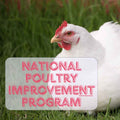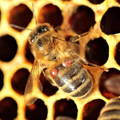
How To Test Your Honeybees for Varroa Mites
Learn how to protect your honeybee colony from Varroa mites with effective testing methods. Safeguard your bees and ensure successful pollination. Explore the best techniques for monitoring mite infestations.
FUN FACT: The varroa mite was first detected in America in 1987 and originates from the Asian honeybee.
Subscribe
To join our mailing list and never miss an update!
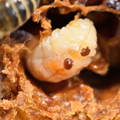
Varroa mites (Varroa destructor) are a significant threat to honeybee colonies worldwide. These tiny parasitic arachnids attach themselves to honeybees and feed on their vital bodily fluids, weakening the bees and potentially transmitting viruses.
Mite populations tend to increase during the beekeeping season, particularly in late summer and early fall. Be aware of these seasonal fluctuations and be prepared to take action when mite counts rise.
When your mite count reaches or exceeds 2-3%, it's a sign that the Varroa mite population within the hive is growing to potentially harmful levels. At this point, treatment is often recommended to prevent further damage to the colony.
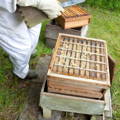
Left unchecked, varroa mite infestations can lead to the collapse of entire beehives. To safeguard your bee colony and support the health of these crucial pollinators, regular monitoring and testing for varroa mites are essential. In this article, we will explore various methods for testing and detecting these mites.
why monitoring varroa mites is important
Honeybees are vital to pollinating crops and ensuring the availability of many of the foods we enjoy daily. The threat posed by varroa mites is a serious concern for beekeepers and agriculture as a whole. Here's why testing for varroa mites is so important:
• Hive Health: Varroa mites can weaken and kill honeybee colonies, making regular testing essential to maintain the health of your bees.
• Crop Pollination: Healthy bee colonies contribute significantly to successful crop pollination, helping to ensure abundant harvests and food security.
• Virus Transmission: Varroa mites can transmit harmful viruses within bee colonies, further jeopardizing their well-being.
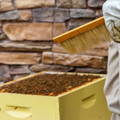
bee collection for varroa mite testing
Although there are several methods to test for varroa mites, collecting the bees to test is essentially the same for all methods. Getting them out of the hive is the easy part. Getting the bees into the jar is the hard part. You are going to “pour” the bees you collect into the test kit.
1. Prepare a piece of paper by creasing a fold down the center. This is what you are going to use to “pour” the honeybees into the test jar.
2. Pull a frame with honeybees and brood, making sure the queen is not on the frame you have selected.
3. Using your bee brush or simply knock the bees off of the frame and on to the creased piece of paper.
4. Pour the bees into the varroa mite testing jar and quickly close the lid.
5. You should collect approximately 300 bees or ½ cup in order to get good results.
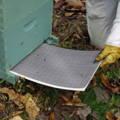
METHODS TO TEST FOR VARROA MITES
There are various methods available to test for varroa mites, each with its own advantages and disadvantages. Beekeepers can choose the method that best suits comfort level and convenience.
• Sugar shake method.
• Alcohol wash method.
• Sticky board method.
• Drone brood inspection.
sugar shake method:
The sugar shake method is a non-invasive, gentle technique for testing varroa mite levels. Here's how it works:
1. Collect approximately 300 honeybees from your hive.
2. Place the collected bees in a container with a screened bottom.
3. Add powdered sugar to the container.
4. Shake the container to coat the bees with sugar.
5. Wait for a few minutes as the sugar causes the mites to fall off the bees and through the screen.
6. Count the fallen mites.
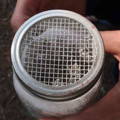
ALCOHOL WASH METHOD:
The alcohol wash method is a more accurate but more intrusive method for mite testing because the bees you've collected will all die:
1. Collect approximately 300 honeybees as with the sugar shake method.
2. Place the bees in a container.
3. Pour rubbing alcohol over the bees.
4. Agitate the container to dislodge the mites from the bees.
5. Pour the alcohol mixture through a fine mesh to collect the mites.
6. Count the mites in the collected solution.
Trending Articles
STICKY BOARD METHOD:
Sticky boards are placed on the bottom of the hive for a specified period (usually 24-72 hours). They are coated with a sticky substance that traps varroa mites as they fall from the bees. After the set period, remove the sticky board and count the mites.
DRONE BROOD INSPECTION:
Varroa mites prefer to reproduce in drone brood cells, as they offer more space for mite reproduction. Inspect drone brood cells for the presence of mites. This method requires experience and a good understanding of bee brood development.
COMMERCIAL TESTING SERVICES
Several commercial services offer mite testing. These services typically involve sending a sample of your bees to a laboratory, where professionals will count the number of varroa mites present. This option may be more expensive but provides highly accurate results.
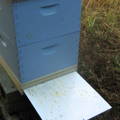
Testing for varroa mites is a fundamental aspect of responsible beekeeping and bee conservation. Early detection and intervention are key to maintaining the health of honeybee colonies, which are vital for both agriculture and biodiversity. Beekeepers can choose from various testing methods, including the sugar shake, alcohol wash, sticky boards, drone brood inspection, or commercial services, depending on their preferences and resources.
Remember that regular monitoring and treatment for varroa mites, when necessary, can help protect your honeybee colony, allowing them to continue their essential role as pollinators and safeguarding their place in our ecosystem. Beekeeping and bee conservation efforts are crucial for our food supply and the preservation of these incredible insects.
Trending Products
Copyright©2023 All rights reserved. We love to have you share our article as long as you include a direct link to this page. This article or any portion thereof , including all images, may not be reproduced or used in any manner whatsoever without the express written permission of Gypsy Shoals Farm.


